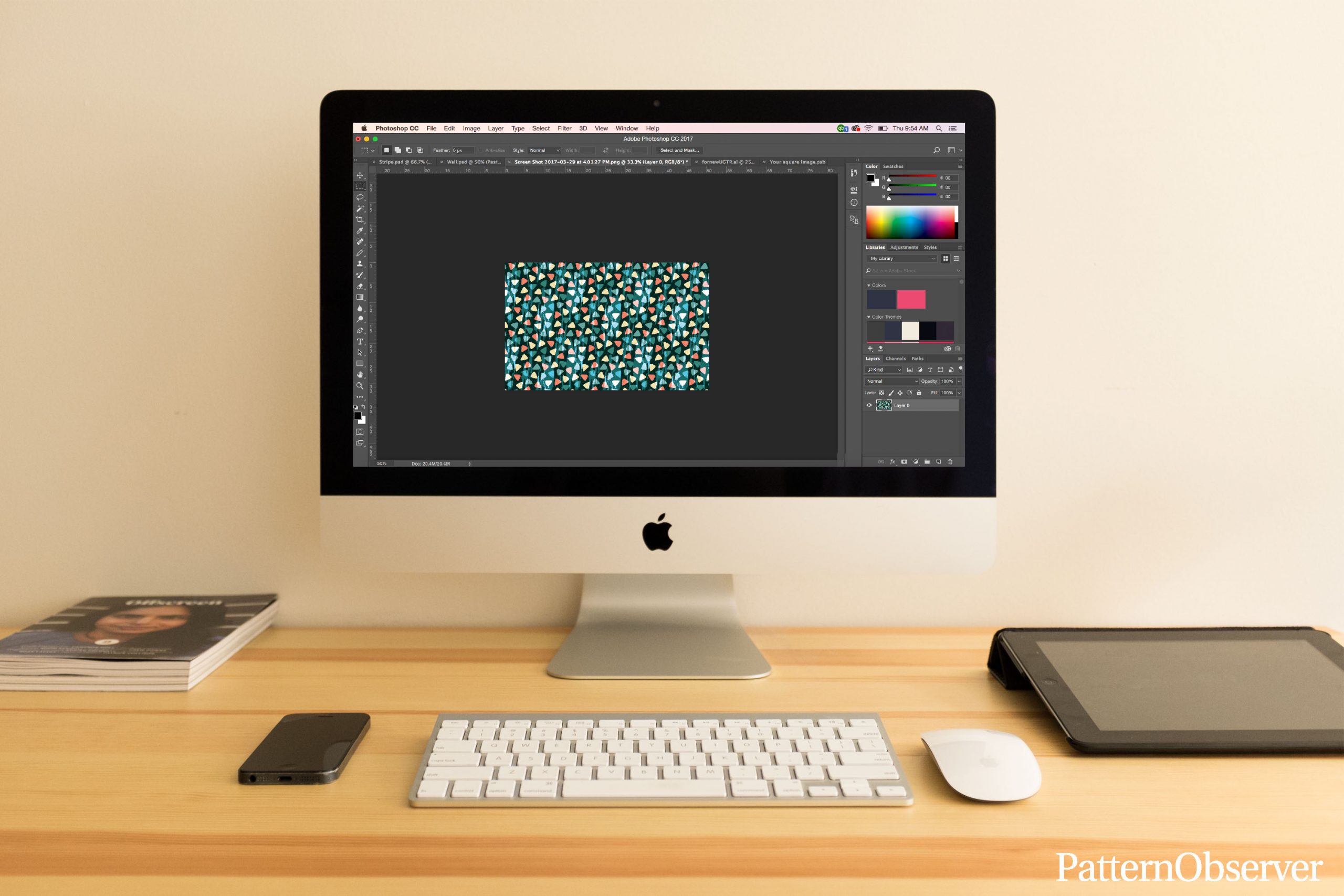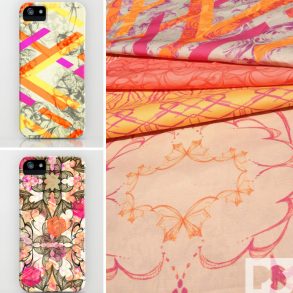The life cycle of a pattern design has many stages: trend research, motif creation, layout development, tweaking, adjusting, coloring, finalizing—and, finally, establishing the repeat.
This last step, the repeat process, is one of the most important parts of the pattern design process, but in my experience, it’s often the step that is overlooked or rushed through.
As designers, we spend countless hours developing the right concept, the perfect flower, or the jaw-dropping texture, only to rush through the one step that can make or break a pattern: the repeat. We are so enamored with the motifs, or so excited to move onto our next collection concept, that we forget that our job is not yet done.
We forget to cultivate the beauty of the repeat.
We forget that a repeat is more than a production tool.
We forget that an uninspired repeat can make the most beautifully-illustrated flower look unprofessional and lackluster.
But you don’t have to fall into this trap! You can learn how to perfect your repeat so that all of your hard work pays off in a beautiful finished design. In this post, I’ll share a bit about what makes a repeat work for a pattern design, some common repeat styles, as well as some easy-to-fix mistakes to perfect your repeats.
What Makes Pattern Repeats Great
A great repeat is undetectable to the average consumer. When our pattern design is printed on hundreds of yards of fabric, the repeat shouldn’t jump out at us or catch our eye. Our repeats should camouflaged within the beautiful motifs, colors and textures of our designs allowing our eye to move within the artwork in a pleasing, comfortable way. Rather than jumping out at you, the whole feeling of the pattern should be cohesive, seamless, and perfectly suited to your motifs.
Important Pattern Design Repeat Styles
There are a few repeat styles you can try with your work, but the two most popular are the full drop repeat and the half drop repeat.
Full Drop Repeat
In a full drop repeat, artwork is repeated along horizontal and vertical lines. The motif repeats perfectly along the vertical line of the fabric. It also repeats perfectly along the horizontal line. This is called a square repeat because the repeat forms a perfect square.
Rectangle shaped repeats are also considered full drop repeats. If your horizontal repeat, for instance, is a bit longer than your vertical repeat the overall pattern would create a type of rectangle. The same thing would happen if the vertical repeat was a bit longer than the horizontal. Either is perfectly acceptable and considered a full drop repeat.
Half Drop Repeat
In a half drop repeat, the artwork is repeated along horizontal and vertical lines just like in a full drop repeat. This time, however, the horizontal repeat is staggered. The motif repeats perfectly on the vertical line but then drops exactly half of the vertical repeat along the horizontal line.
Half drop repeats are great for concealing a repeat within the artwork. Full drop repeats can sometimes be very obvious, especially when using large or bold design elements. A half drop repeat helps conceal the repeat in the finished product. If you don’t want a repeat to be obvious, a half drop repeat is a great tool to use.
Common Pattern Repeat Mistakes
If seamlessness and undetectability are the goal, it stands to reason that a poorly designed repeat stands out to us and becomes the first thing that we notice. Instead of seeing the motifs, colors, or textures, our eye is drawn to the horizontal or vertical movement that the repeat is creating. Poorly designed repeats can often seem jarring or uncomfortable. They don’t feel natural, and ultimately limit the options for a pattern’s use. A beautiful motif might become unusable across a wide surface if the repeat is obvious.
If you do notice an issue with your repeat, don’t worry. Many common repeat mistakes are easily fixable. We cover the specifics of these questions, how to remedy them, and some other options for critique in more depth within the Textile Design Lab’s course: The Ultimate Guide to Repeats.
Try This Technique
Now that you have a sense of what makes a repeat work, and what makes it not work, you can try it with your own work—and with the patterns and designs you see around you. Take some time to look at three or so repeats and critique them using what you’ve learned:
- Can you identify the repeat style? Is it a full or half-drop repeat? Something else?
- Is the repeat visible or well camouflaged within the design? If visible, what makes it obvious?
- What are your feelings about the repeat? Is it jarrying and disruptive to the overall product design, or does it create a balanced sense of movement and flow within the final product?
This exercise is important for developing your critical eye, and will help you look for ways to improve your own repeats before sending them to agents, studios and clients.
Your journey to growing your business and increasing visibility starts by joining our Textile Design Lab community: a 12-month journey to begin earning money from your craft and increasing your brand visibility.













